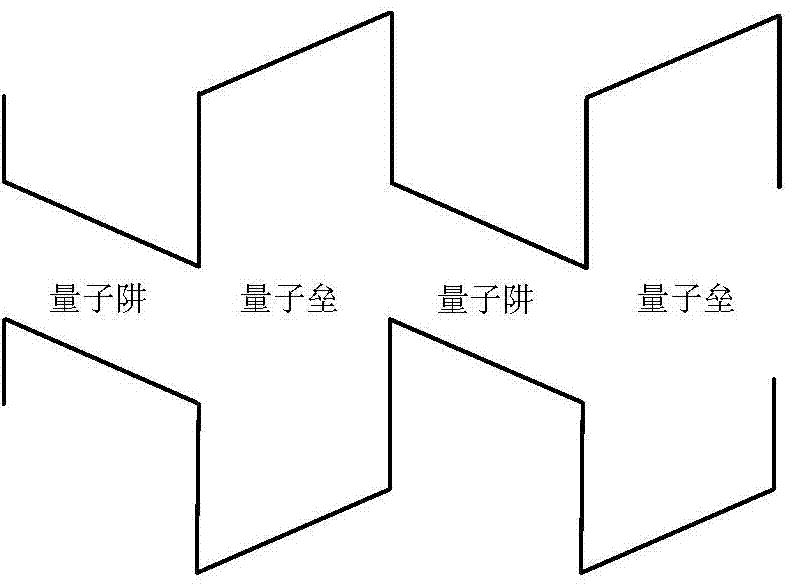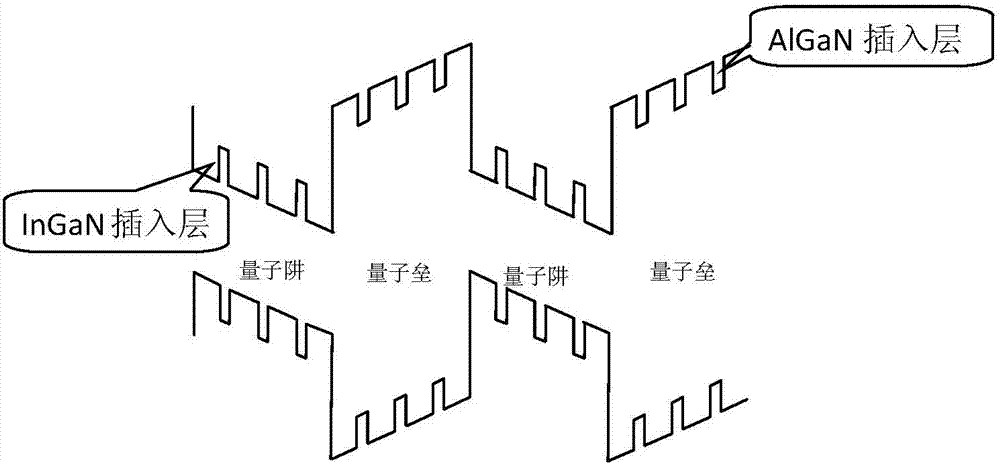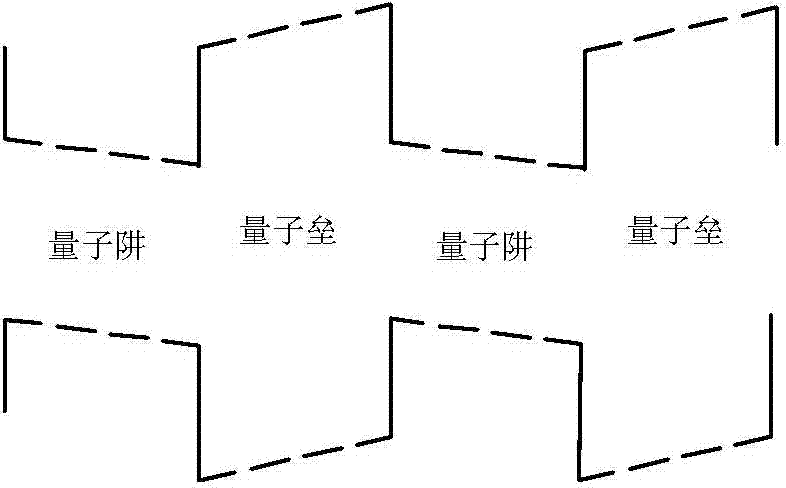LED epitaxial growth method
A technology of epitaxial growth and growth process, which is applied in the new field of LED epitaxial growth, can solve problems such as changing the effective bandgap width, reducing device stability, and reducing quantum efficiency, so as to reduce the change of the forbidden band width and improve the quantum efficiency , the effect of reducing height
- Summary
- Abstract
- Description
- Claims
- Application Information
AI Technical Summary
Problems solved by technology
Method used
Image
Examples
Embodiment 1
[0026] Embodiment one (the present invention)
[0027] 1. Put the cleaned sapphire substrate into the MOCVD equipment and bake it at 1100°C for 10 minutes.
[0028]2. A low-temperature GaN layer with a thickness of 10 nm is grown at a cooling temperature of 620° C., and the growth pressure is 500 torr.
[0029] 3. Raise the temperature to 1165°C to grow an undoped u-GaN layer with a thickness of 1.5um, and the growth pressure is 200torr.
[0030] 4. Raise the temperature to 1170° C. to grow a silane-doped n-GaN layer with a thickness of 2.0 μm and a growth pressure of 200 torr.
[0031] 5. Switch the carrier gas from hydrogen to nitrogen, and the pressure is 200torr. Cool down to 1065°C, grow In with a thickness of 1nm 0.42 Ga 0.58 N quantum well layer, regrown In with a thickness of 0.8nm 0.15 Ga 0.85 The N insertion layer grows for two cycles in this way, and finally grows In with a thickness of 1nm 0.42 Ga 0.58 N quantum well layer to complete quantum well growth; (...
Embodiment 2
[0038] Embodiment 2 (traditional solution)
[0039] 1. Put the cleaned sapphire substrate into the MOCVD equipment and bake it at 1100°C for 10 minutes.
[0040] 2. A low-temperature GaN layer with a thickness of 10 nm is grown at a cooling temperature of 620° C., and the growth pressure is 500 torr.
[0041] 3. Raise the temperature to 1165°C to grow an undoped u-GaN layer with a thickness of 1.5um, and the growth pressure is 200torr.
[0042] 4. Raise the temperature to 1170° C. to grow a silane-doped n-GaN layer with a thickness of 2.0 μm and a growth pressure of 200 torr.
[0043] 5. Switch the carrier gas from hydrogen to nitrogen, the pressure is 200torr, and grow In 0.42 Ga 0.58 N / Al 0.1 Ga 0.9 N multiple quantum well layer. The specific method is: lower the temperature to 1065°C, and grow In with a thickness of 3nm. 0.42 Ga 0.58 N quantum well layer; then raise the temperature to 1175°C, and grow Al with a thickness of 10nm 0.1 Ga 0.9 The N quantum barrier la...
PUM
| Property | Measurement | Unit |
|---|---|---|
| Thickness | aaaaa | aaaaa |
| Thickness | aaaaa | aaaaa |
| Thickness | aaaaa | aaaaa |
Abstract
Description
Claims
Application Information
 Login to View More
Login to View More - R&D
- Intellectual Property
- Life Sciences
- Materials
- Tech Scout
- Unparalleled Data Quality
- Higher Quality Content
- 60% Fewer Hallucinations
Browse by: Latest US Patents, China's latest patents, Technical Efficacy Thesaurus, Application Domain, Technology Topic, Popular Technical Reports.
© 2025 PatSnap. All rights reserved.Legal|Privacy policy|Modern Slavery Act Transparency Statement|Sitemap|About US| Contact US: help@patsnap.com



